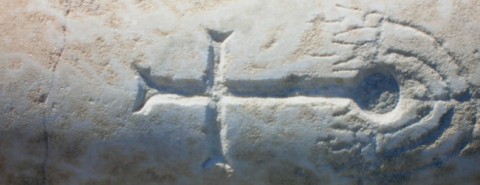Layers of faith

In the ancient city of Laodicea in western Turkey, site of the church reprimanded in the book of Revelation for being “neither cold nor hot,” our guide led us across the old agora to a pile of broken columns. One had a fascinating marking. A menorah had been scratched onto the stone, and next to it was inscribed a cross. What did this mean?
The guide gave it the most benign interpretation: here was an example of Jews and Christians living together, he said, perhaps sharing a building.
It’s more likely, however, that the markings were signs of religious conflict. Perhaps Christians in the fourth century had taken over a synagogue—which might have been erected on a pagan temple. The deep circle carved at the base of the cross suggests that it was meant as an act of replacement, displaying the church’s triumph over the synagogue.




